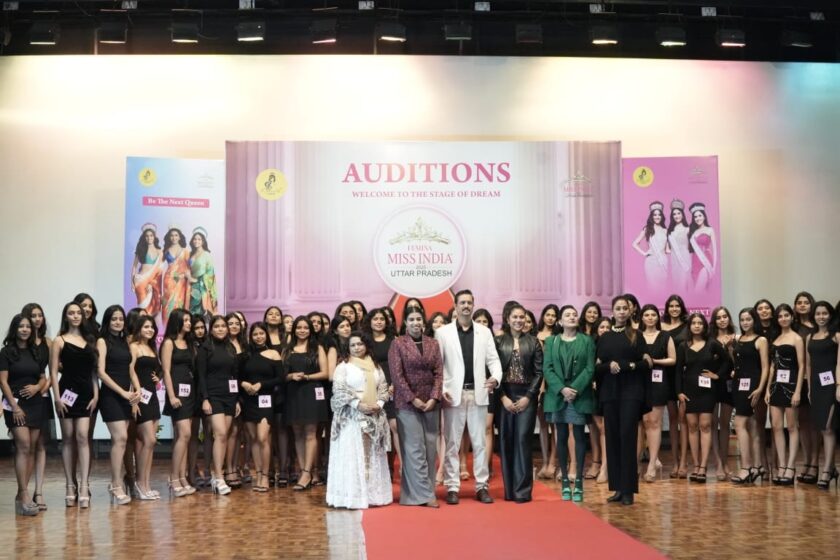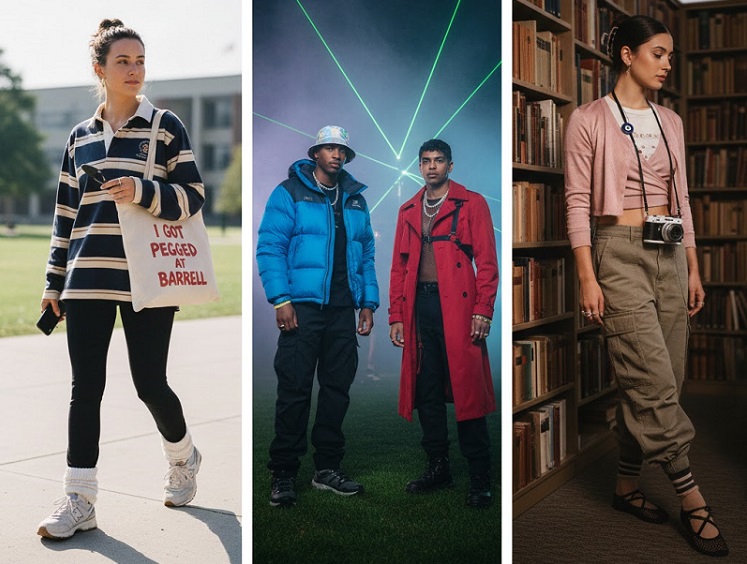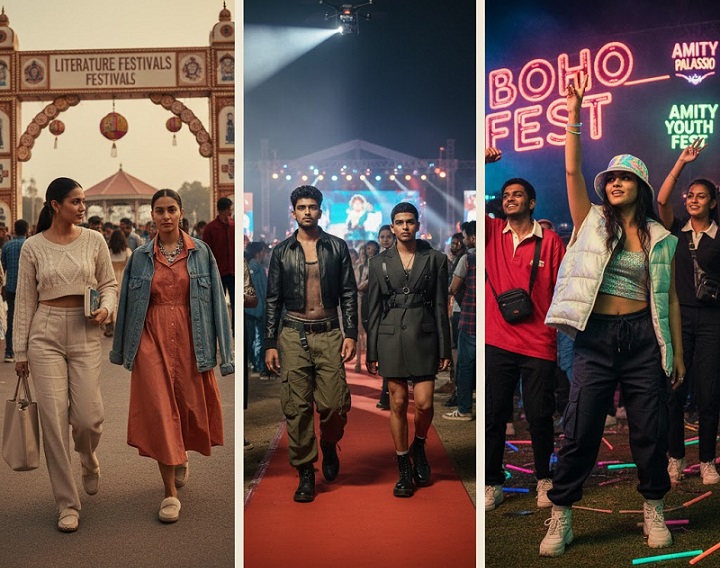Lucknow: The rural workforce plays a pivotal role in the fashion industry, particularly in countries like India, where traditional craftsmanship and artisanal skills are deeply rooted in the culture. The influence of rural artisans on the fashion scene is increasingly being recognized, as designers and brands worldwide seek to incorporate authenticity, sustainability, and cultural heritage into their collections. Here’s an in-depth look at how the rural workforce is shaping the fashion industry, with examples to illustrate this impact.
1. Preservation and Revival of Traditional Crafts
The rural workforce is the custodian of traditional crafts that have been passed down through generations. These crafts, including weaving, embroidery, dyeing, and printing, are essential elements of fashion that are now being revived and celebrated on global platforms.
- Chikankari of Lucknow: Chikankari, a traditional form of embroidery originating from Lucknow, is a prime example of how rural artisans contribute to the fashion industry. Women in rural areas around Lucknow are the primary workforce behind this intricate embroidery. Designers like Abu Jani-Sandeep Khosla and Manish Malhotra have brought Chikankari to the forefront of high fashion, using it in bridal wear and couture collections. The demand for Chikankari has not only preserved this ancient craft but has also provided a steady income for rural artisans.
- Banarasi Weaving: The Banarasi saree, a symbol of Indian luxury, owes its existence to the skilled weavers of rural Varanasi. These artisans use traditional handlooms to create exquisite sarees that are cherished worldwide. Designers like Sabyasachi Mukherjee have incorporated Banarasi silk into their collections, ensuring that the craft remains relevant and that the rural workforce continues to thrive.
2. Sustainability and Ethical Fashion
As the fashion industry grapples with issues of sustainability and ethical production, the rural workforce offers solutions that align with these values. Handcrafted products made by rural artisans are inherently sustainable, as they often use natural materials and traditional techniques that have minimal environmental impact.
- Khadi Movement: Khadi, a handspun and handwoven fabric, is a symbol of sustainability and self-reliance. Rural spinners and weavers are at the heart of the Khadi movement, which was popularized by Mahatma Gandhi during India’s independence struggle. Today, Khadi is making a comeback as a sustainable fabric in the fashion industry. Designers like Anavila Misra and Rajesh Pratap Singh are incorporating Khadi into their collections, promoting slow fashion and supporting rural artisans in the process.
- Upcycling and Zero-Waste Fashion: Many rural artisans are involved in upcycling and zero-waste fashion initiatives. For instance, in the state of Gujarat, artisans create patchwork quilts and garments from textile waste. Brands like Doodlage are collaborating with rural artisans to create upcycled fashion, turning textile scraps into unique, sustainable clothing.
3. Empowerment of Rural Women
The fashion industry’s collaboration with the rural workforce has significantly empowered rural women, providing them with financial independence and social recognition. Many fashion initiatives specifically target women in rural areas, offering them training and employment opportunities.
- SEWA (Self-Employed Women’s Association): SEWA is an organization that empowers rural women by helping them gain employment through traditional crafts. In Gujarat, SEWA members create hand-embroidered garments that are sold in both domestic and international markets. These women, who were once marginalized, are now integral to the fashion industry, contributing to collections showcased on global runways.
- Rangsutra: Rangsutra is a social enterprise that works with rural artisans across India, the majority of whom are women. The enterprise connects these artisans with urban markets, ensuring fair wages and sustainable livelihoods. Rangsutra’s products, including handwoven textiles and home décor, are sold through retail giants like Fabindia, highlighting the impact rural artisans have on mainstream fashion.
4. Collaborations Between Designers and Artisans
The fashion industry has seen a surge in collaborations between designers and rural artisans, resulting in collections that are rich in cultural heritage and craftsmanship. These collaborations not only bring rural crafts to urban markets but also ensure that artisans receive due credit and compensation for their work.

- Anita Dongre’s Grassroot: Grassroot by Anita Dongre is a brand that celebrates Indian craftsmanship by collaborating with rural artisans. The brand works with weavers, block printers, and embroiderers from rural areas, incorporating their skills into contemporary designs. This initiative has helped revive dying crafts and provided artisans with a platform to showcase their work to a global audience.
- Folk: The fashion brand Folk collaborates with rural artisans to create modern clothing that retains traditional techniques. Their collection includes garments made using block printing, handloom weaving, and natural dyeing, all done by artisans in rural Rajasthan and Gujarat. These collaborations ensure that traditional crafts continue to evolve and remain relevant in the modern fashion landscape.
5. Impact on Rural Economies
The involvement of rural artisans in the fashion industry has a ripple effect on rural economies. As demand for handcrafted products increases, so does the income of rural households. This economic empowerment leads to better education, healthcare, and overall quality of life for rural communities.
- Pochampally Ikat: The village of Pochampally in Telangana is famous for its Ikat weaving. The surge in demand for Ikat fabrics, driven by both domestic and international markets, has led to increased economic stability in the region. The weavers, who were once struggling to make ends meet, now have a sustainable source of income, and the village has seen improvements in infrastructure and living standards.
- Ajrakh Printing in Kutch: The artisans of Kutch, Gujarat, are known for their Ajrakh block printing, a complex process that involves natural dyes and intricate patterns. The resurgence of interest in sustainable and handcrafted textiles has brought global attention to Ajrakh. As a result, rural artisans in Kutch have seen a significant increase in demand for their work, leading to better economic conditions and the preservation of their cultural heritage.
6. Challenges and the Way Forward
Despite the positive impact of the rural workforce on the fashion industry, challenges remain. Many rural artisans still face issues such as lack of access to markets, inadequate infrastructure, and exploitation by middlemen. To truly empower the rural workforce, these challenges must be addressed.
- Direct Market Access: Providing rural artisans with direct access to markets, either through online platforms or dedicated retail spaces, can eliminate middlemen and ensure fair wages. Initiatives like Amazon’s Karigar program, which connects rural artisans with consumers directly, are steps in the right direction.
- Skill Development and Training: While traditional skills are invaluable, there is also a need for skill development and training in new techniques and market trends. Government and non-government organizations should focus on providing training programs that help rural artisans innovate while preserving their cultural heritage.
- Recognition and Intellectual Property Rights: It is essential to recognize the contribution of rural artisans and protect their intellectual property rights. This can prevent cultural appropriation and ensure that artisans receive due credit and compensation for their work.
The rural workforce is the backbone of the fashion industry, especially in countries like India, where traditional crafts and artisanal skills are integral to fashion. By preserving and innovating these crafts, rural artisans are making a significant impact on the global fashion scene. Their contribution not only enriches the industry but also brings economic and social benefits to rural communities. As the fashion industry continues to evolve, the role of the rural workforce will only become more prominent, highlighting the importance of ethical and sustainable fashion.





